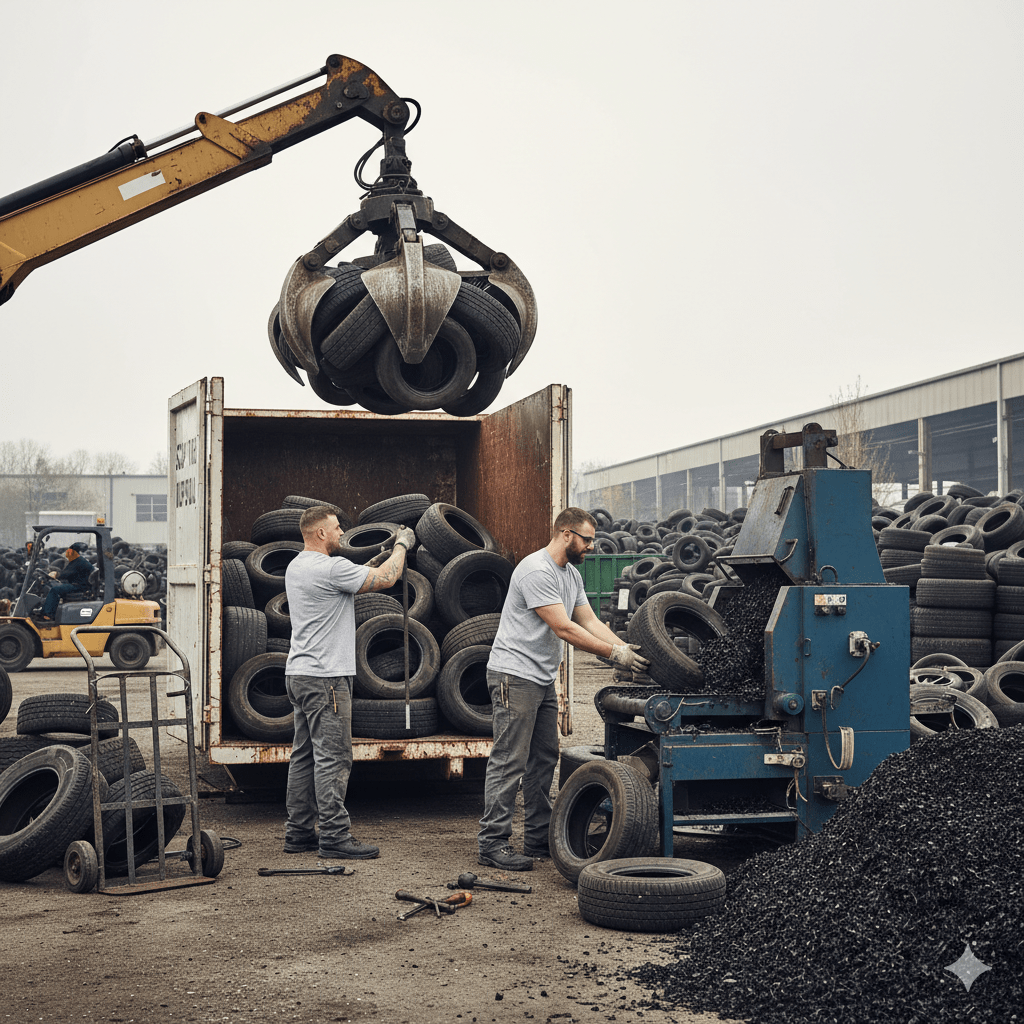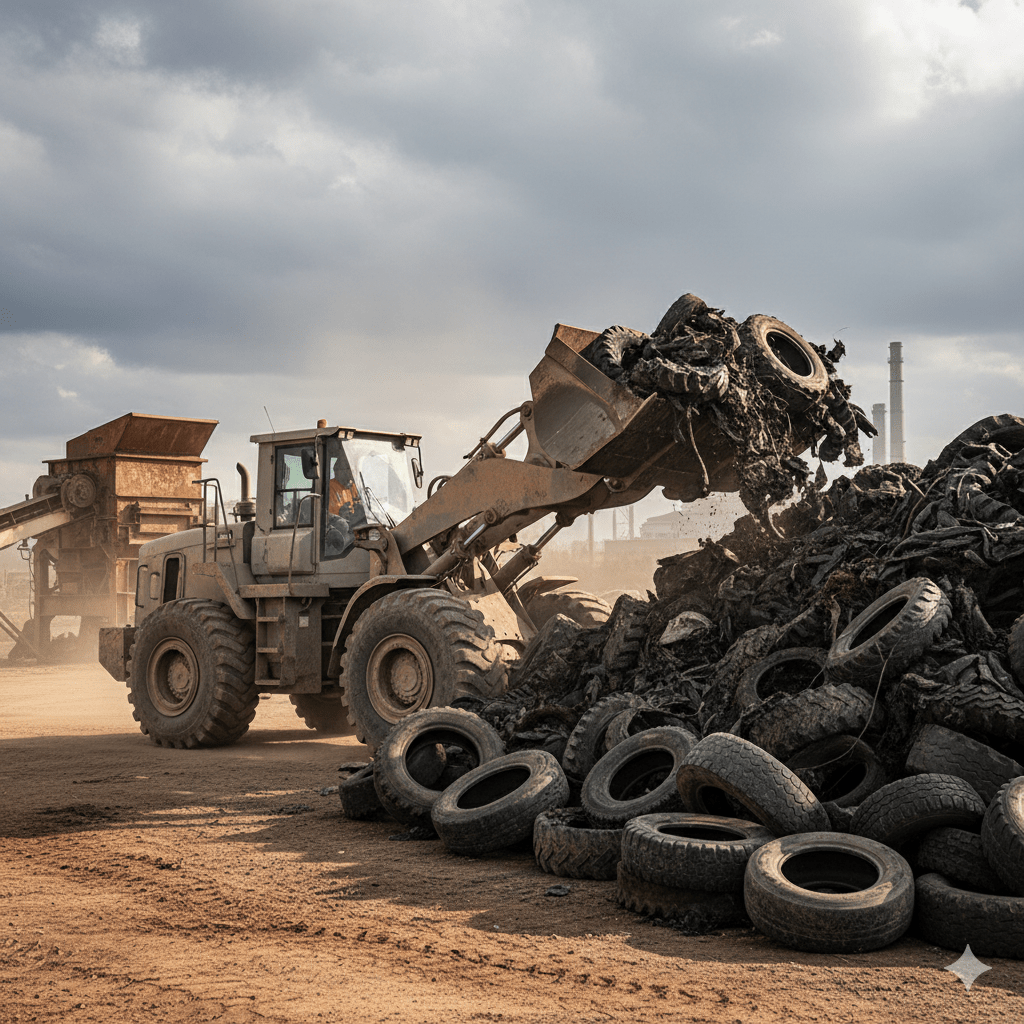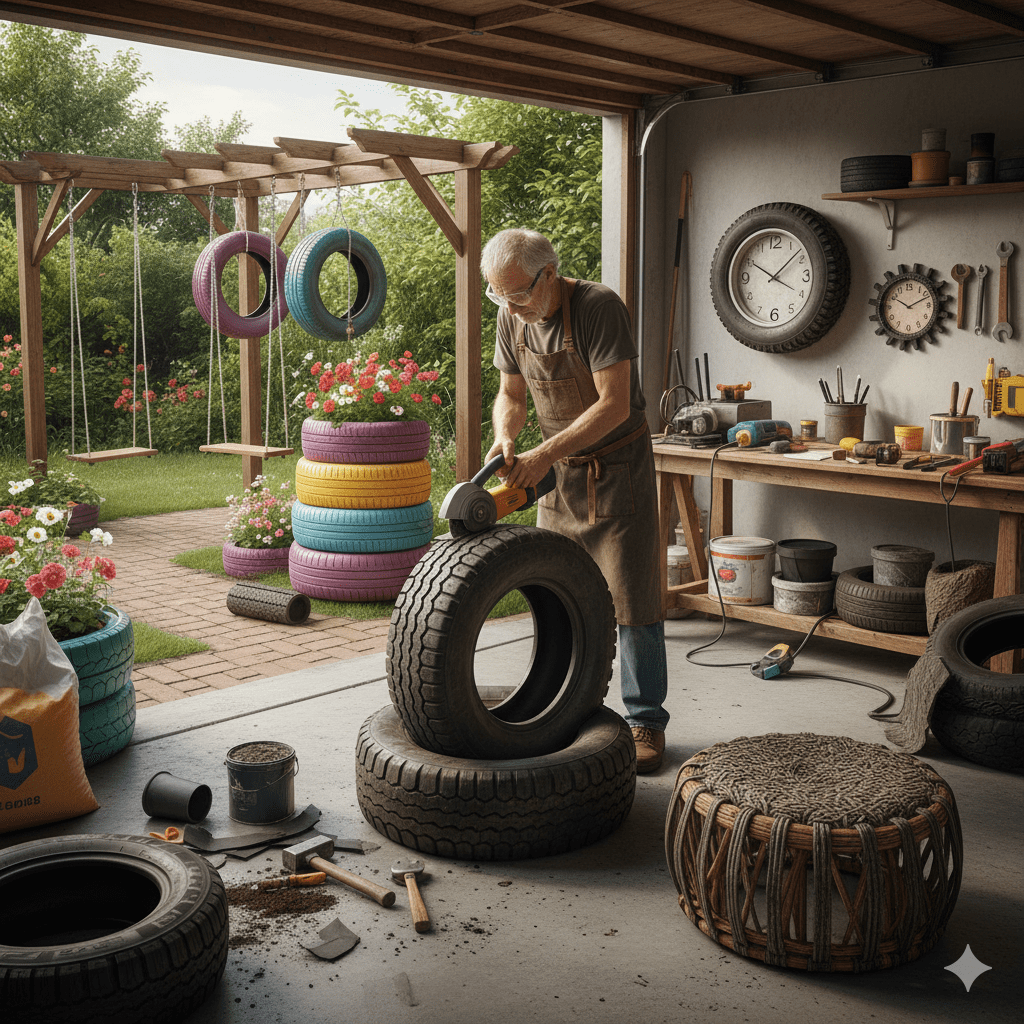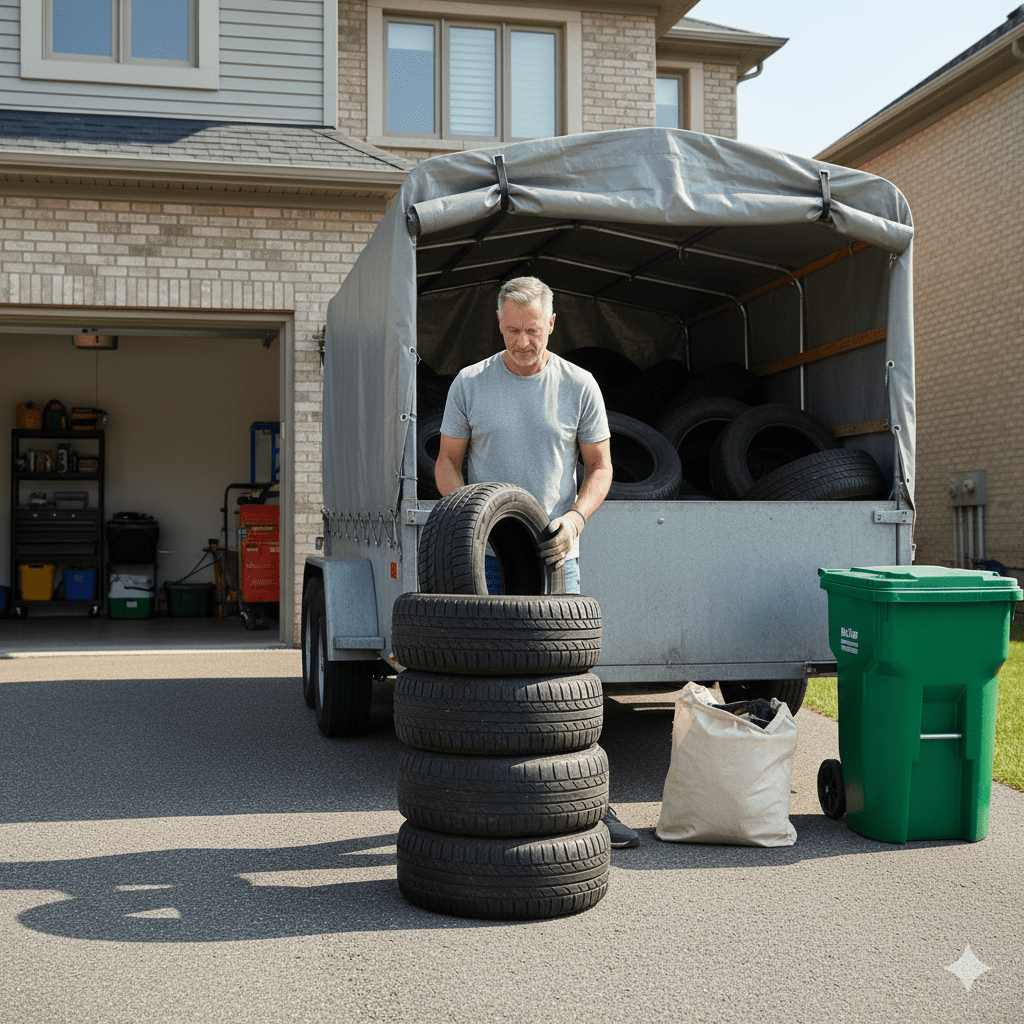Tires fight back—awkward to lift, eager to roll, and heavier than expected when waterlogged. The cure isn’t brute force, it’s choosing the right tire removal services with the proper tools and process. That way, the pile leaves quickly while your back—and your patience—stay intact.
Utility Trailers and Pickup Trucks for Transport
Transport is the spine of the job. Build it sturdy and legal.
- Pickup basics: full-size bed with a net or tarp and ratchet straps. Add sideboards for higher stacks and better containment.
- Utility trailers: 5×8 or 6×12 with tall mesh sides keeps nests stable; twin-axle for heavy runs. Check GVWR, lighting, and brakes.
- Load plan: treads-to-treads in alternating nests, 6–8 tires per tier. Strap every tier; finish with a cross-strap. Nothing should move at 60 mph.
- Weight & route: know your curb weight and payload; wet tires add surprise pounds. Hit the recycler first (early cutoff), landfill last (if required).
- Access: leave 10 feet of clear approach for the truck/trailer. Mud and tight gates turn a 20-minute load into a memoir.
Tire Dollies and Moving Aids
Leverage > muscle. Your spine will write you a thank-you note.
- Tire dollies: U-shaped, high-capacity dollies cradle stacks and glide through doors. Perfect for shop cleanouts and long carries.
- Hand trucks: wide nose plates keep nests from slipping; stair skids help on steps.
- Tire hooks & tongs: grab sidewalls cleanly for quick flips without pinching fingers.
- Ramps: aluminum bifold ramps or a shop-built wood ramp with cleats. Rolling beats deadlifting.
- Skid steer (optional): grapple or forks for farm/OTR piles; mind turf and weight limits.
Workflow: hook → flip to stack → dolly to trailer → strap—repeat.

Cutting Tools for Size Reduction
Only cut when the facility demands it. Then cut smart.
- Confirm spec first: many recyclers take whole off-rim tires; some require sidewall cuts or quartering.
- Tools that work:
- Heavy utility knife with hooked blades (lubed with soapy water).
- Oscillating multi-tool for controlled sidewall cuts.
- Reciprocating saw with coarse bi-metal blade for stubborn beads/treads.
- Method: pierce near bead → slice sidewall (avoid steel belts) → repeat other side → remove tread “belt.” Stack belts flat; they ship dense.
- Blade hygiene: swap often; heat dulls and smokes. Stop if you smell burning rubber.
- Debris control: sweep steel wires; they puncture shoes and trailer tires with equal enthusiasm.
Cut the minimum to meet the rule. Less time, less risk, fewer blades.
Heavy-Duty Bags and Straps for Containment
Containment keeps the job legal and the load intact.
- Bags: 3–6 mil contractor bags for small shreds/sidewall cutouts only. Whole tires do not belong in bags.
- Straps: 1″ or 1.5″ ratchet straps (WLL ≥ 500 lb) for every tier + two cross-straps per stack. Inspect stitching and hooks.
- Banding: plastic or steel banding for palletized shop loads; add edge guards to protect sidewalls.
- Tarp & net: highway-rated tarp or cargo net over the entire bed/trailer; state laws often require it.
- Absorbents & mats: if you’re hauling wet/dirty tires, line the deck with rubber mats; bring absorbent for oily surprises.
If a trooper can tug a tire loose with two fingers, you’re not done strapping.
Safety Gear for Handling Dirty or Damaged Tires
The job is physical; the hazards are real. Dress like you want to do it again tomorrow.
- Hands & eyes: cut-resistant gloves (ANSI A4+), safety glasses. Steel wires act like needles; protect your digits.
- Respiratory: N95/P100 when cutting or blowing out dust; skip leaf blowers indoors.
- Feet & legs: steel-toe or composite-toe boots; long pants. Wet bead wires laugh at sneakers.
- Skin & bio: nitrile liners under work gloves for grime; hand wash and sanitizer on the truck.
- Lifting rules: push, don’t pull; stack at waist height; team-carry OTRs; never race a ramp.
- Environment: drain standing water (mosquitoes), watch for snakes/rodents in field piles, and keep kids/pets out of the work zone.
Bottom line
Tire hauling is a physics problem with a legal punchline. Bring the right transport, roll the weight with dollies, cut only to spec, strap like a professional, and wear gear that treats your body like you’ll need it next weekend. Do that, and the pile leaves fast—and stays gone.





